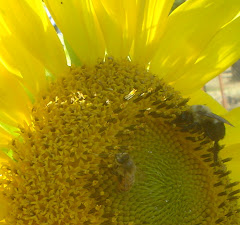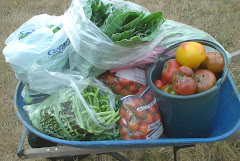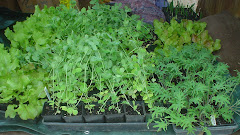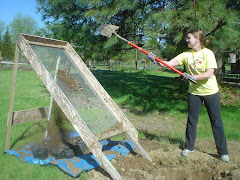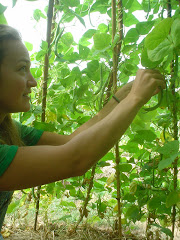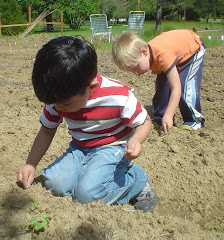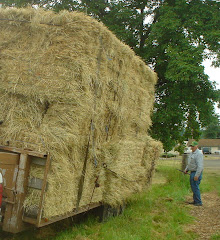Here in the Pacific NW, and in many other parts of the world, varieties of an insect called the Pea Weevil (Sitona lineatus) can destroy the peas and other legumes you are saving as seed crop. As the peas mature in the pod, the weevil lays an egg in each pea. If you store these pea-seeds as-is, by spring time each one will have a tiny hole bored by the larvae, from the inside out, destroying the seeds' ability to sprout and grow. A year ago, we had a whole stash of our pea seeds destroyed from these weevils and we didn't want it to happen again.
An on-line search revealed no low-tech solutions for seed-savers. We read about research to create genetically modified seeds (GMO's) and super-cold flash-freezing done with dried ice. The dry-ice idea got Chris to thinking so we decided to experiment. We took our whole stash of pea seed (about six cups) and put it in an air-tight zip-lock bag, in a regular freezer, way in the back corner, and left it there from August to January (four and a half months). The seeds were fully ripe and dry when we put them in the freezer. (There was evidence that the weevils had already laid their eggs as virtually every seed had a small, brown spot--a sign of their entry point.)
In early January, we conducted a germination test. We wrapped about 50 seeds in a wet paper towel and kept them moist in a dish for five days. At that time, we counted how many had begun to sprout (about 40) which means they have a germination rate of at least 80%. This is excellent! Then, to be sure that there weren't any pea weevel larvae still dormant in our seed stock, we put about 30 in a tightly sealed plastic bag and left them out at room temperature for two weeks to see if any would hatch. None did. Though it appears we have killed the larvae, we're not taking any chances and we're leaving the pea seeds in our freezer till it's time to start plants this spring.
To save pea seeds, grow them to maturity and leave the pods attached to the pea vines until they are starting to turn tan and shrivel. Strip the pods from the vines and place them in a warm, dry place to finish drying (we lay them out on nursery trays on the top shelf of our garden shed for about a week.) Pop the peas out of their pods, place in freezer-bags (properly labeled with variety of seed and date) in the freezer, way in the back (or bottom)--the coldest spot. Leave them there until you're ready to plant next year's cycle.
If you have comments or anything to add to this post, please do so directly below so everyone benefits from your experience.
| Signs of pea weevils |
 |
| Pea weevil cycle |
In early January, we conducted a germination test. We wrapped about 50 seeds in a wet paper towel and kept them moist in a dish for five days. At that time, we counted how many had begun to sprout (about 40) which means they have a germination rate of at least 80%. This is excellent! Then, to be sure that there weren't any pea weevel larvae still dormant in our seed stock, we put about 30 in a tightly sealed plastic bag and left them out at room temperature for two weeks to see if any would hatch. None did. Though it appears we have killed the larvae, we're not taking any chances and we're leaving the pea seeds in our freezer till it's time to start plants this spring.
To save pea seeds, grow them to maturity and leave the pods attached to the pea vines until they are starting to turn tan and shrivel. Strip the pods from the vines and place them in a warm, dry place to finish drying (we lay them out on nursery trays on the top shelf of our garden shed for about a week.) Pop the peas out of their pods, place in freezer-bags (properly labeled with variety of seed and date) in the freezer, way in the back (or bottom)--the coldest spot. Leave them there until you're ready to plant next year's cycle.
If you have comments or anything to add to this post, please do so directly below so everyone benefits from your experience.

















